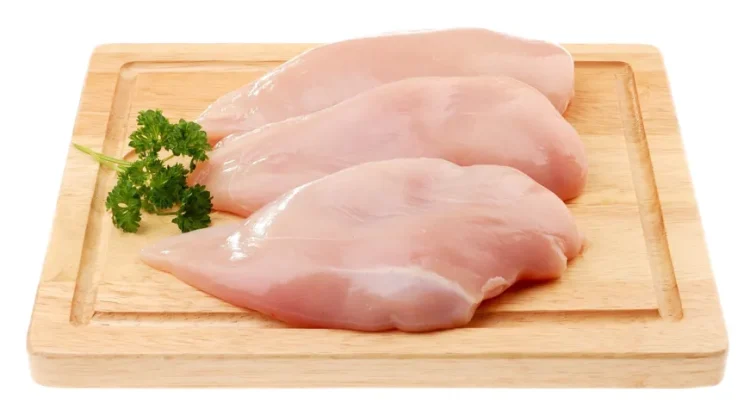With the exception of markets in Southeast Asia where chicken leg meat is preferred, breast meat reigns supreme. Breast meat is healthy, quick and easy to prepare and can be served in countless ways. It is infinitely flexible. Breast meat is particularly popular in North America, Europe and Oceania. It is wise to approach your breast meat production line with careful consideration, given its significant profitability within your process.
Breast meat reaches the consumer in many forms. These include a generous selection of fillet products to be cooked at home such as whole fillets, half fillets, tenderloins and diced breast meat for stir-fried oriental dishes. They also include reformed or muscle breast meat portions of identical shape and weight for the catering sector as well as cubes and strips to be processed industrially into a wide variety of tasty further processed products. Breast meat is also a key ingredient in the ever-popular chicken burger or chicken sandwich.
Standard or organic
Breast meat is eaten in the home, in quick service outlets and as the centerpiece of an elaborate dish in fine-dining restaurants. In the latter instance, breast fillet will probably have come from a label rouge bird or similar organically grown, more ‘exclusive’ chicken, moving away from the standard broiler. Many markets are seeing demand for such birds, known under various different market-specific names and labels, increase. In some markets, as for example, in the Netherlands, standard broilers are no longer sold in supermarkets.
Broiler weights are increasing all the time, meaning that the fillets coming from them are often too big to fit onto a retail tray and have to be cut. Cutting has to be done in such a way that the fillet still looks “natural”, as consumers will not want to buy fresh product that has obviously been tampered with.For a number of reasons, breast meat is often sold on retail trays of a specific price and weight. Fixed-weight/fixed-price packs are convenient both for the retailer and the consumer. Retailers order a fixed number of packs of the same weight and price; consumers know exactly how much they want to spend on their meal. The ‘problem’ passes to the processor, who will want to ensure that any giveaway, particularly of high-value breast fillet, is minimal, as underweight packs are strictly not allowed. Fortunately, Marel technology is now available to help ensure this. With the help of I-Cut122 TrimSort and RoboBatcher Flex, maximum utilization of the valuable deboned poultry breast meat is guaranteed.

Boost your margins
The retail sector still produces catch-weight packs, where a given number of breast fillets are packed onto a tray and where the weight of each fillet and therefore the total pack weight can vary. Product destined for the catering/quick service restaurant sector is packed bulk. As people in those markets where breast fillet is popular become richer, demand for the product itself and items made from it is sure to grow further. Investing in a Marel breast meat production line tailored to your market’s needs is always a perfect fit and ensures a long-term profitability, boosting your margins.
At Marel, we view the entire breast meat product flow, from deboning to packing, as an interconnected and integrated process. Every component in the processing line is part of a unified whole and works in harmony to achieve a common goal. In our case, that goal is achieving overall excellence in breast meat processing.
Key components in this holistic approach to breast meat processing starts with an AMF-i or an FHF FlexControl deboning system. Further down the line, other innovations and proven solutions, including Innova ProFlow Breast Meat software, SensorX, IRIS FI, I-Cut 122 TrimSort and RoboBatcher Flex, complete the breast meat process.
All this is more than just deboning chicken breast; we are connecting every aspect of the process to achieve the absolute maximum in quality, productivity and yield. Such a holistic approach succeeds in making innovative solutions all work together to elevate your performance.



















